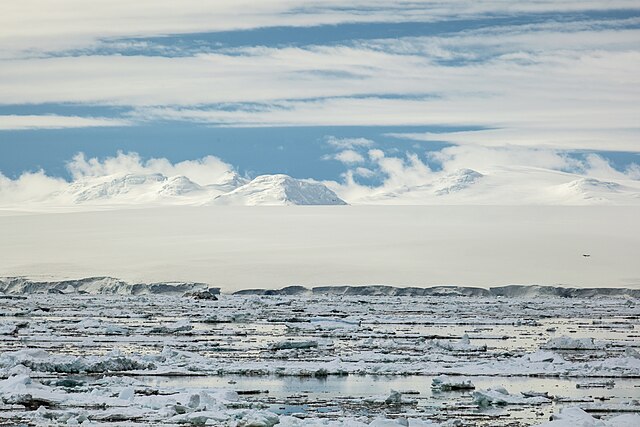An ice shelf is a large platform of glacial ice floating on the ocean, fed by one or multiple tributary glaciers. Ice shelves form along coastlines where the ice thickness is insufficient to displace the more dense surrounding ocean water. The boundary between the ice shelf (floating) and grounded ice is referred to as the grounding line; the boundary between the ice shelf and the open ocean is the ice front or calving front.
View of the Larsen Ice Shelf grounding line between Mamelon Point and Hodges Point along the Foyn Coast of the Antarctic Peninsula. The floating ice shelf is in the left foreground, and the grounding line is visible as an abrupt change in surface slope due to flexure caused by the buoyancy force where the ice reaches flotation.
Some named Antarctic iceshelves.
Ice shelf extending approximately 6 miles into the Antarctic Sound from Joinville Island
Panorama of Ross Ice Shelf
Ice is water that is frozen into a solid state, typically forming at or below temperatures of 0 °C, 32 °F, or 273.15 K. As a naturally occurring crystalline inorganic solid with an ordered structure, ice is considered to be a mineral. Depending on the presence of impurities such as particles of soil or bubbles of air, it can appear transparent or a more or less opaque bluish-white color.
An ice block, photographed at the Duluth Canal Park in Minnesota
This iceberg can stay afloat in spite of its size because it is less dense than water
So-called feather ice on the plateau near Alta, Norway. The crystals form at temperatures below −30 °C (−22 °F) and contain a lot of trapped air, making them light enough to be supported by the thin branch
Frozen waterfall in southeast New York








